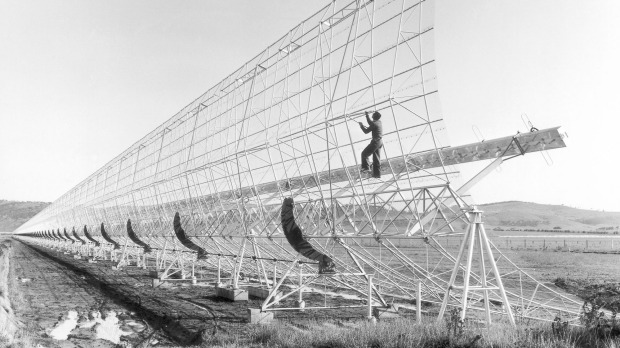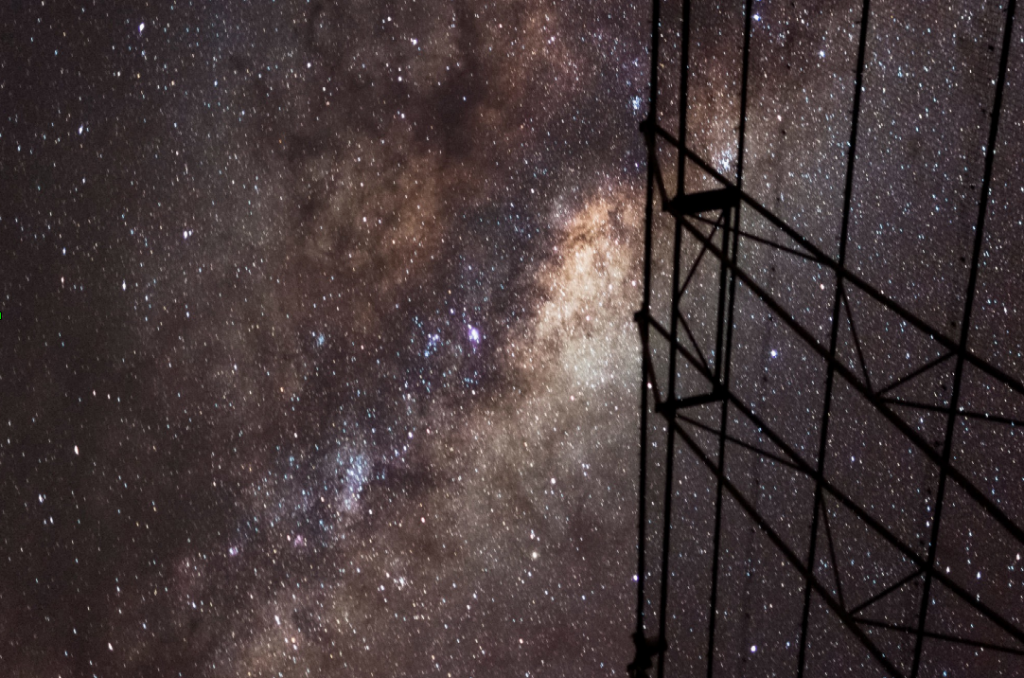How many scientific instruments built in 1965 are still alive, kicking, and making important discoveries today? Fifty-one years on, the Molonglo Observatory Synthesis Telescope (MOST) is not only one of the coolest-looking telescopes, but it's now been upgraded to help astrophysicists discover some of the rarest events in the Universe.
The largest radio telescope in the Southern Hemisphere, MOST is nearly 1-kilometre long, and combines 7,744 individual radio antennae. That means it's able to 'listen' to events occurring in the distant Universe, and back in the '60s, MOST discovered some of the most exciting objects in the Universe, such as pulsars. Now it has a new mission – to detect mysterious fast radio bursts, and other short-lived astrophysical phenomena by taking 1,000 photos every single second.
Despite the telescope's impressive track record, it wasn't quite able to handle this new task in its original state. But it's now been upgraded by researchers from Swinburne University of Technology to handle an impressive 22 gigabytes of data a second, enough to allow it to photograph the Universe every millisecond.
The biggest change was the upgrade of the telescope's outdated analogue technology. A team led by Matthew Bailes, from Swinburne's Centre for Astrophysics and Supercomputing has now written new software to improve data collection and processing.
 Michael Large (University of Sydney) at work building the telescope. Image: University of Sydney
Michael Large (University of Sydney) at work building the telescope. Image: University of Sydney
"The powerful supercomputer that Bailes and Swinburne have provided makes this an exceptional telescope for exploring the transient sky with fast and flexible cadence," said Anne Green, an astrophysicist at The University of Sydney who was involved in the project. The new upgrade also installed new signal-processing computers, which are able to sift through all the data being produced.
After a five-year hiatus, the telescope is now back up, but is only running at a quarter efficiency as the final touches are finished.
Once all the software is online, the telescope will be attempting to observe fast radio bursts, flashes of bright radio energy that last only a few milliseconds. Only 15 of these events have been spotted since the first one was discovered 10 years ago, and no one is quite sure where they come from.
"There are more theories than there are bursts," Bailes said. "Some people think that they occur when two neutron stars collide, others think that neutron stars become unstable and collapse into a black hole and they give off little bursts of radio emission when they do it."
But there are also other hypothesises, including that they arise when a black hole and neutron star merge, or that they are an early warning signal of an impending supernova. Either way, MOST is aiming to discover enough information to piece it together.
"The detection rate is a strong function of efficiency so we haven't been running long enough to find a fast radio burst, but we're hoping that soon we'll be finding one every few weeks," Bailes said.
 Swinburne University of Technology
Swinburne University of Technology
MOST will also be looking back into pulsars, as these spinning neutron stars can attract (excuse the pun) strange gravitational behaviour. "It's fun when you find a pulsar that is spinning 700 times a second; that's faster than a kitchen blender and yet it's a star," Bailes said. "Neutron stars are very tiny so they can get in very close proximity to each other, which means that they travel very quickly around each other and they allow us to test gravity in ways that we can't normally do."
Investigating these pulsar pairs could even further the work done by the LIGO teams working on the newly detected gravitational waves. "These waves are mysterious and difficult to detect but they actually cause the orbit of the neutron star to shrink by one centimetre per day, which might not sound like much, but using the upgraded telescope we can measure the position of neutron stars so accurately that we can even begin to see that effect," Bailes said.
To put the power of the 51-year-old telescope into perspective, MOST can measure changes as small as 1 centimetre from an orbit halfway across the Galaxy, and can capture a millisecond-long radio burst from somewhere in the Universe. We're very excited to see what else this old school telescope can discover next about the cosmos.
Swinburne University of Technology is a sponsor of ScienceAlert. Find out more about their innovative research.
